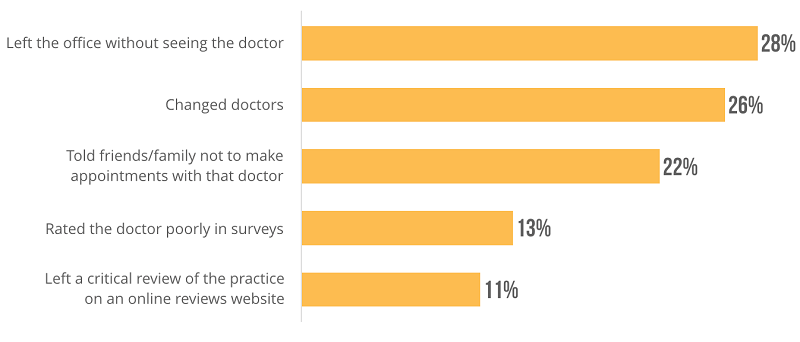
By Steve Cavolick
Healthcare was an early adopter of AI and use cases in production today include personalized healthcare plans, predicting and diagnosing disease, and pattern recognition to identify abnormal cells in images. However, healthcare providers have recently started taking aim at operational and patient flow challenges with predictive analytics and AI.
This is a good area to focus on. A Harvard Medical School study showed the average doctor visit lasts 121 minutes, and 64 of those minutes are spent filling out forms and just plain waiting. That same study estimated that wait times cost each patient an average of $43 per medical visit. Extrapolated out over local and national economies, this represents a significant amount of waste and impacts Gross Domestic Product.
Further bolstering the need to reduce wait times is the coming wave of appointments and procedures that were delayed because of the pandemic. A recent survey showed that nearly 50% of Americans delayed or cancelled healthcare appointments and services due to the virus. However, 70% of the same people who delayed their healthcare said that they planned on making appointments in the next three months. That’s a lot of pent up demand that if not scheduled efficiently, will create frustrated patients.
Healthcare organizations know frustrated patients create negative word-of-mouth and are bad for business, and that wait times directly affect loyalty to a doctor, practice, clinic, or system. A poll demonstrated the measures that patients take when wait times become too long:

That means more than one quarter of people polled have experienced a wait time so long that they left without seeing their doctor. And a quick scan of the social media sites for any doctor or healthcare system will show negative comments about waiting. Patient flow needs to be optimized, especially with the volume of appointments that is expected very shortly.
Having a robust reminder system and enforcing late arrival policies can help on the patient side, but most delays are due to doctors falling behind on appointments. Luckily, AI and intelligent scheduling is here to help, and there are a number of approaches to reducing the wait times.
One way is to analyze patient intake forms to understand the reason why the patient is there and the type of appointment (initial visit? follow up?) to estimate the amount of time the doctor will need. Other approaches include having the predictive model increase the amount of time between appointments as the day goes on, or grouping certain kinds of appointments together with little time between the appointments, and having a longer break between the clusters to let the doctor catch up and get back on schedule.
The kinds of data needed to train these models include past schedules, appointment volumes, class of appointment, reason for visit, as well as survey data from patients and staff, and even social media. As always, having a strong information architecture that provides trusted data to the model is the key first step.
Are you ready to build predictive models that reduce wait times and increase patient satisfaction? LRS’s data scientists are ready to jump in and help you. If you’re not quite there yet, the LRS Big Data and Analytics team has over 20 years of experience organizing data so our customers can build and deploy advanced analytical applications. If you are interested in understanding how we can help you find value in your data, please fill out the form below to request a meeting.
About the author
Steve Cavolick is a Senior Solution Architect with LRS IT Solutions. With over 20 years of experience in enterprise business analytics and information management, Steve is 100% focused on helping customers find value in their data to drive better business outcomes. Using technologies from best-of-breed vendors, he has created solutions for the retail, telco, manufacturing, distribution, financial services, gaming, and insurance industries.